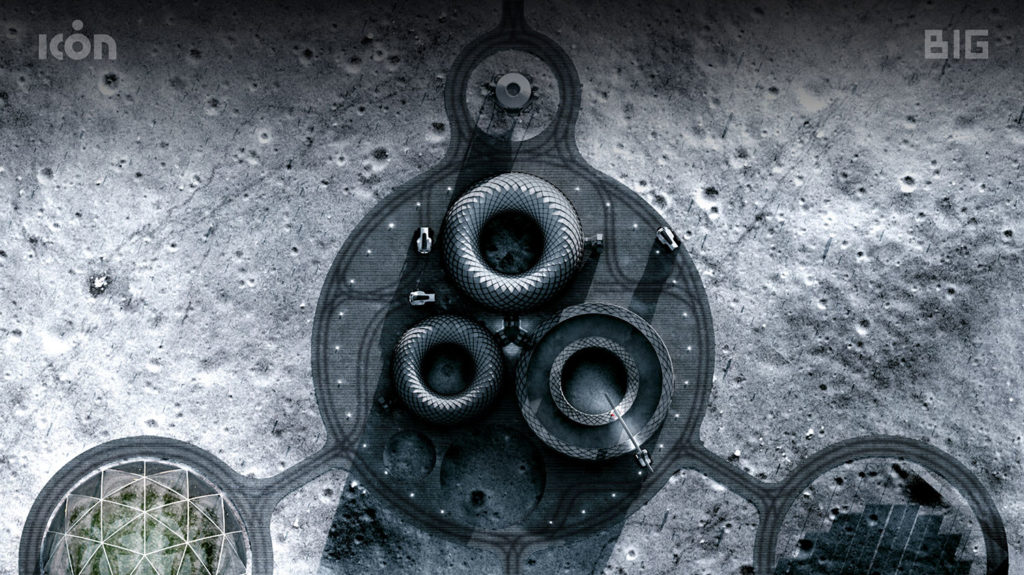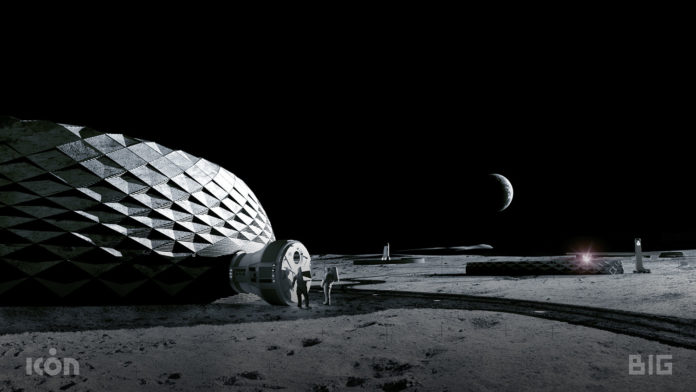NASA has the ambition to return to the Moon by 2024. The U.S. space agency has signaled that, through the Artemis program, the Moon will be the first off-Earth site for sustainable surface exploration.
In this perspective, the Bjarke Ingels Group (BIG) and 3D-printed building company ICON have revealed that they are working together on “Project Olympus,” which aims to develop a space-based construction system that could support future exploration of the Moon. If all goes according to plan, the program will ultimately help humanity gain a foothold on the Moon and Mars.
The architecture firm and SEArch+ (Space Exploration Architecture) were enlisted for the project by ICON after it received a government Small Business Innovation Research (SBIR) contract, including funding from NASA.

The Project Olympus aims to develop a way to create a 3D-printed infrastructure for living on the Moon using material found on its surface. BIG will have a central role in making these Moon habitats. According to the company, its design will be a sustainable lunar habitat, the first human foray into extra-terrestrial construction with robust structures that provide better thermal, radiation, and micrometeorite protection than metal or inflatable habitats can offer.
From landing pads to habitats, these collective efforts together with NASA and SEArch+ are driven by the need to make humanity a spacefaring civilization, according to the press release from BIG.
“To explain the power of architecture, “formgiving” is the Danish word for design, which literally means to give form to that which has not yet been given form. This becomes fundamentally clear when we venture beyond Earth and begin to imagine how we are going to build and live on entirely new worlds. With ICON, we are pioneering new frontiers – both materially, technologically, and environmentally. The answers to our challenges on Earth very well might be found on the Moon.” Bjarke Ingels, Founder and Creative Director, BIG-Bjarke Ingels Group.
The space agency is working, through its Artemis manned lunar exploration program, to establish a long-term human presence on and around the Moon. Achieving this will require extensive use of lunar resources, including ice water (for life support and rocket fuel) and lunar dirt (for building materials), NASA officials pointed out. Having the extra ability to use 3D printing to make life easier for astronauts on the Moon is an opportunity to exploit.
